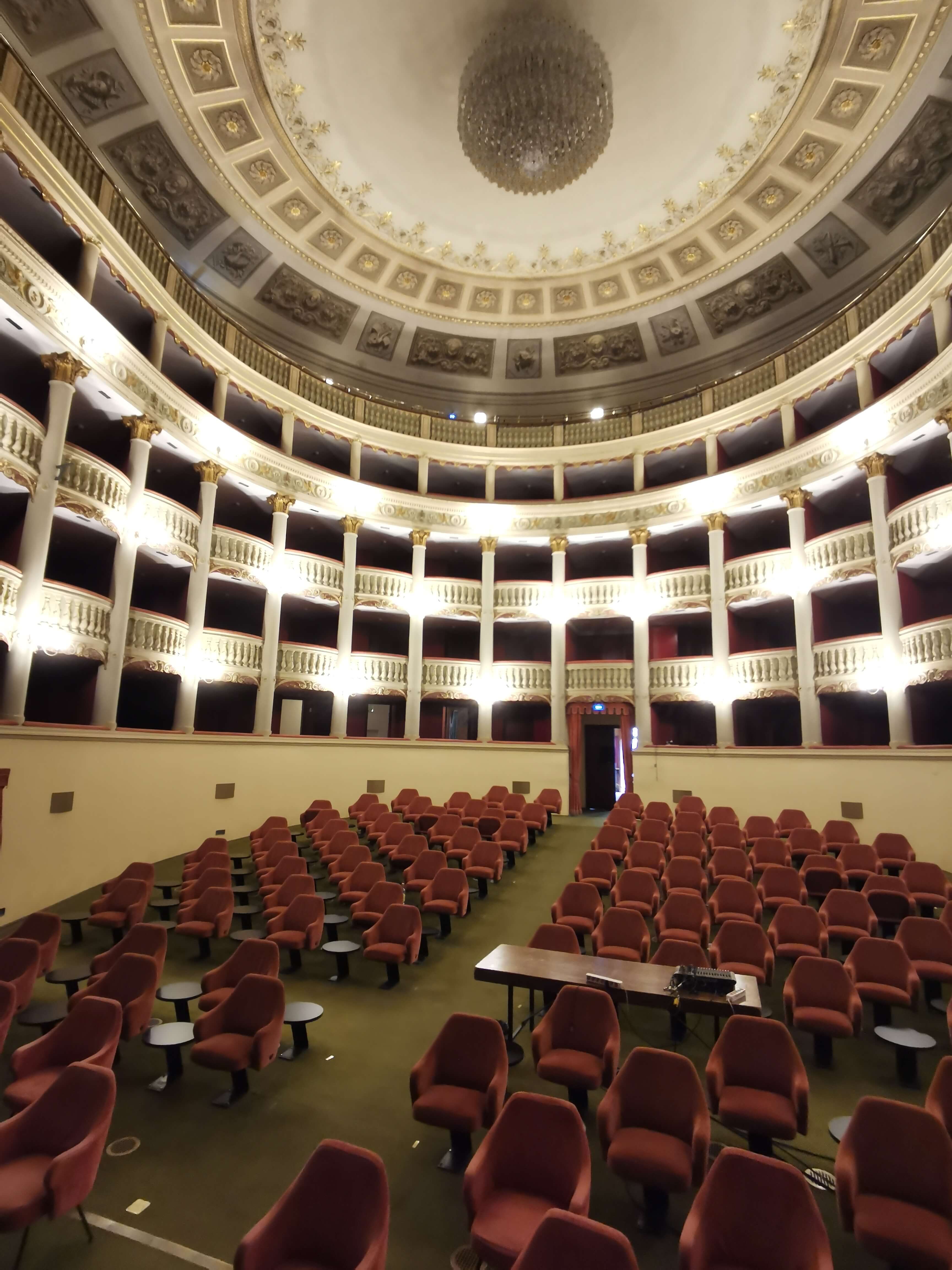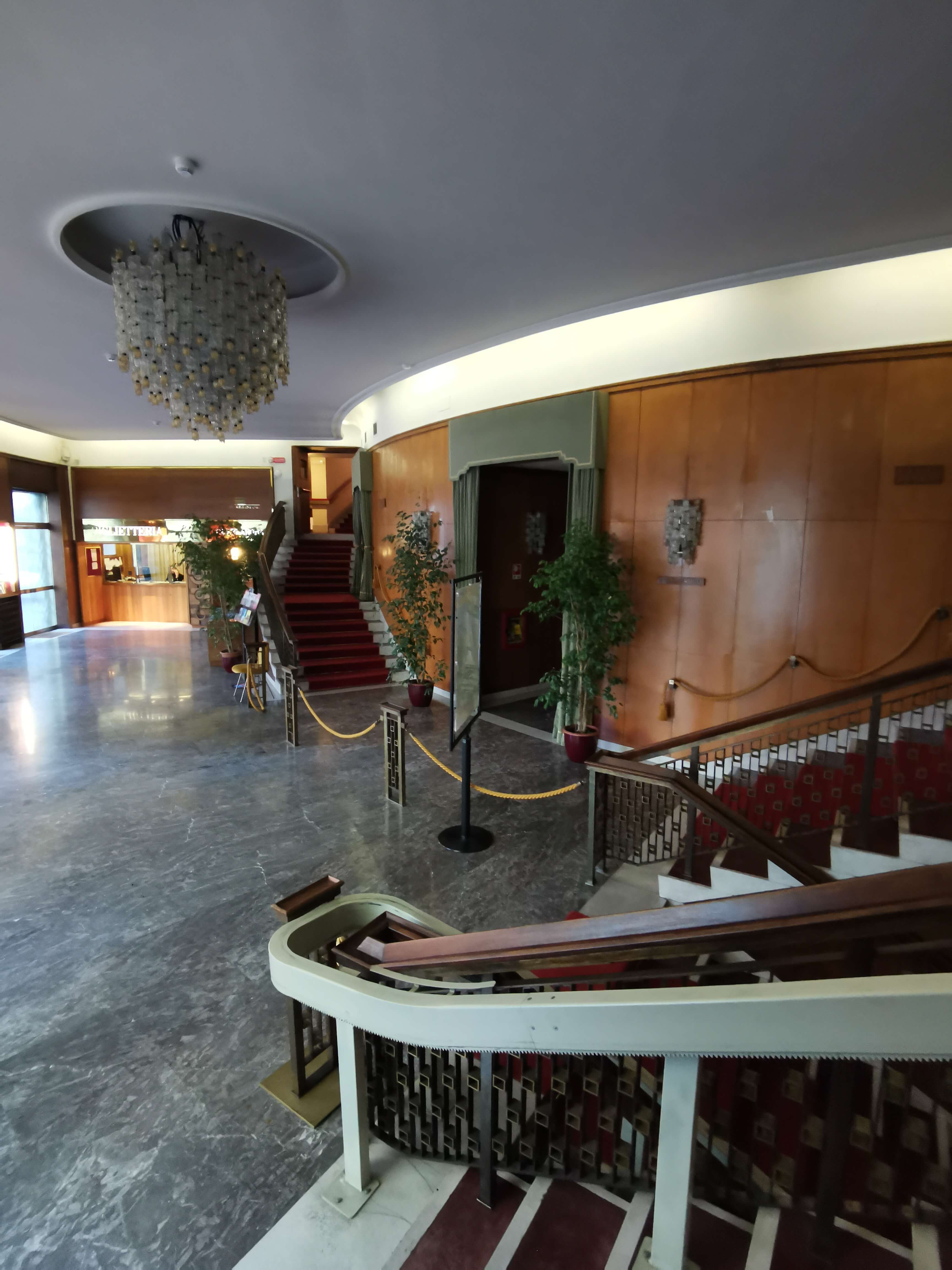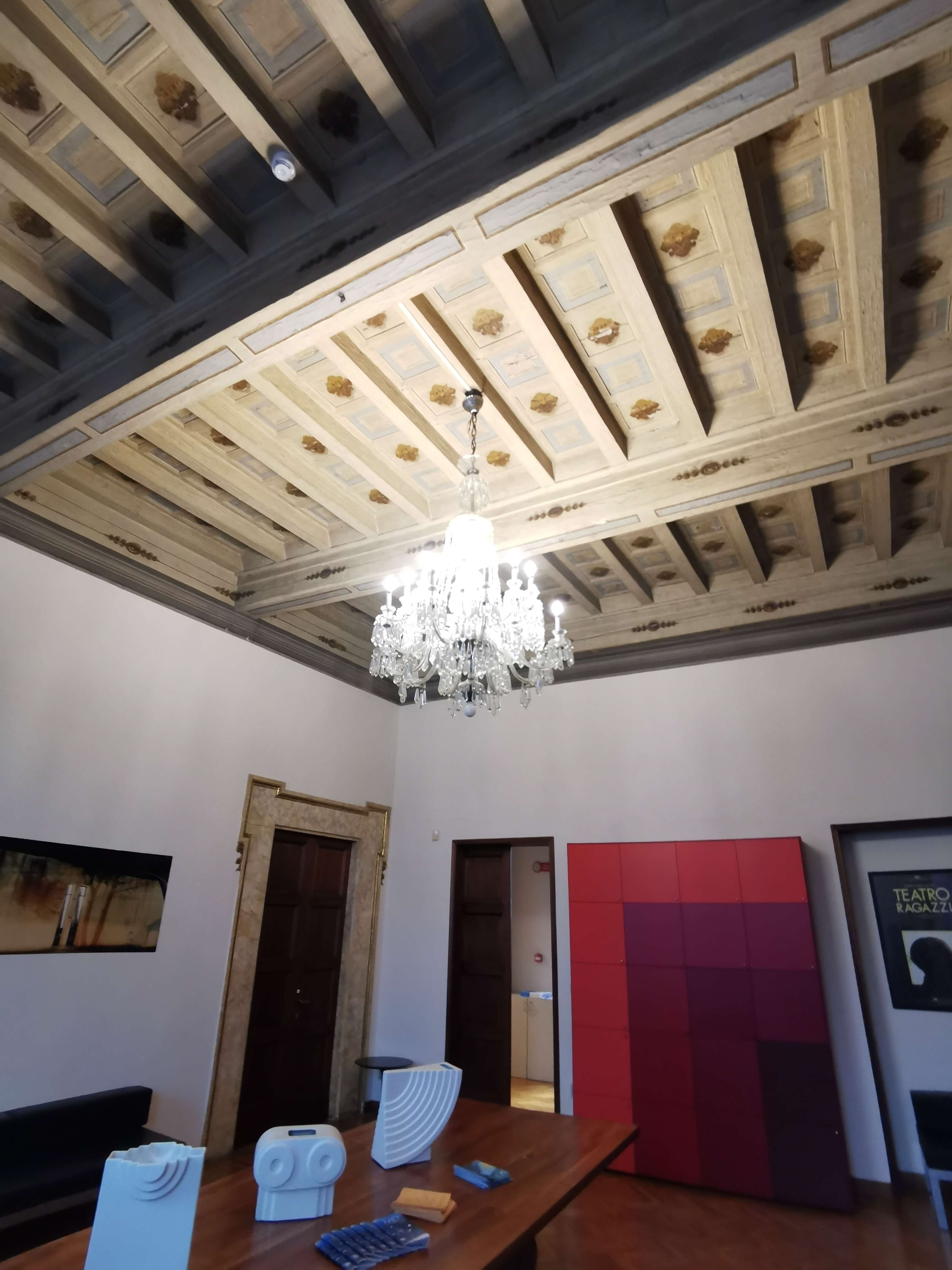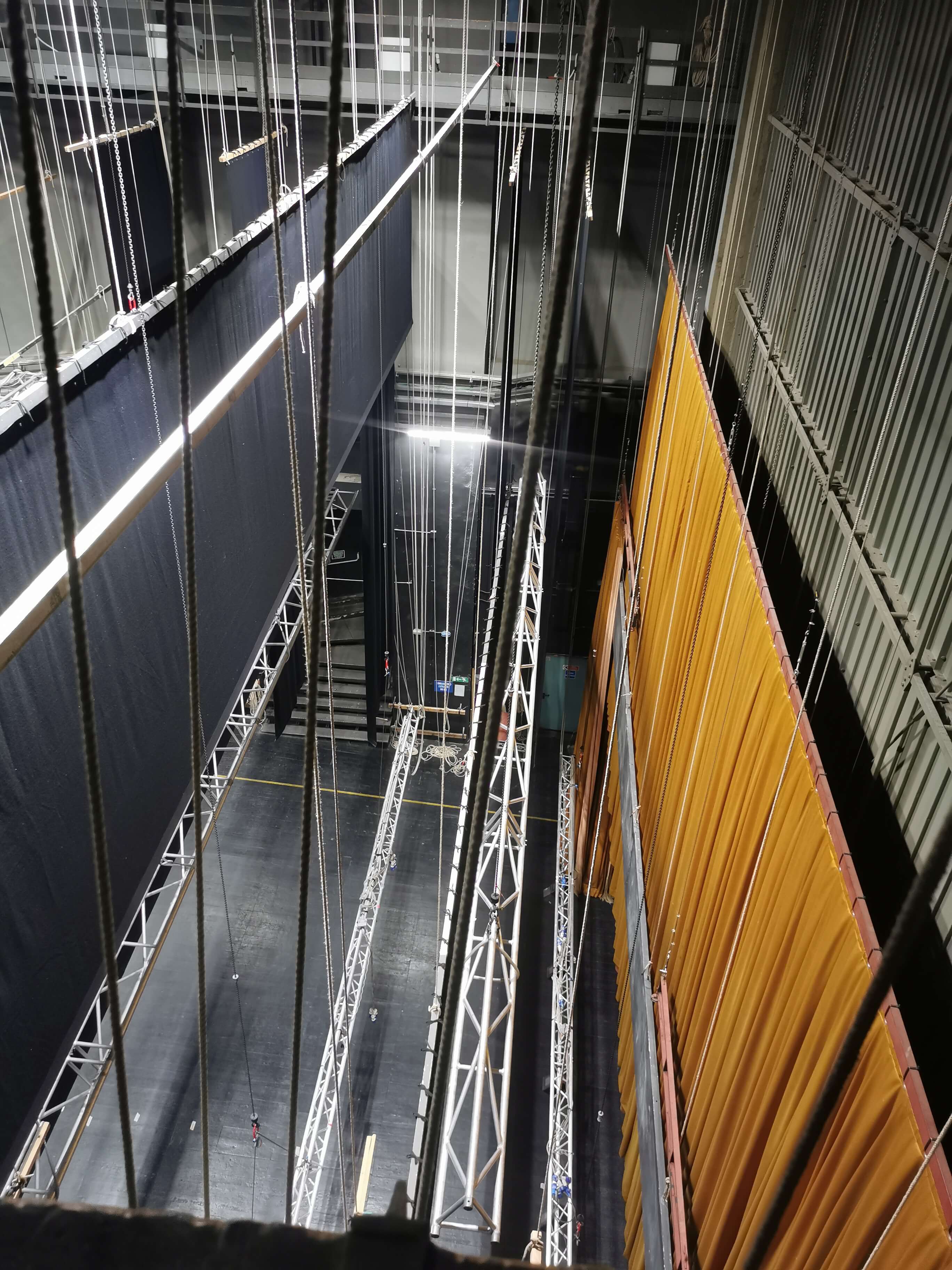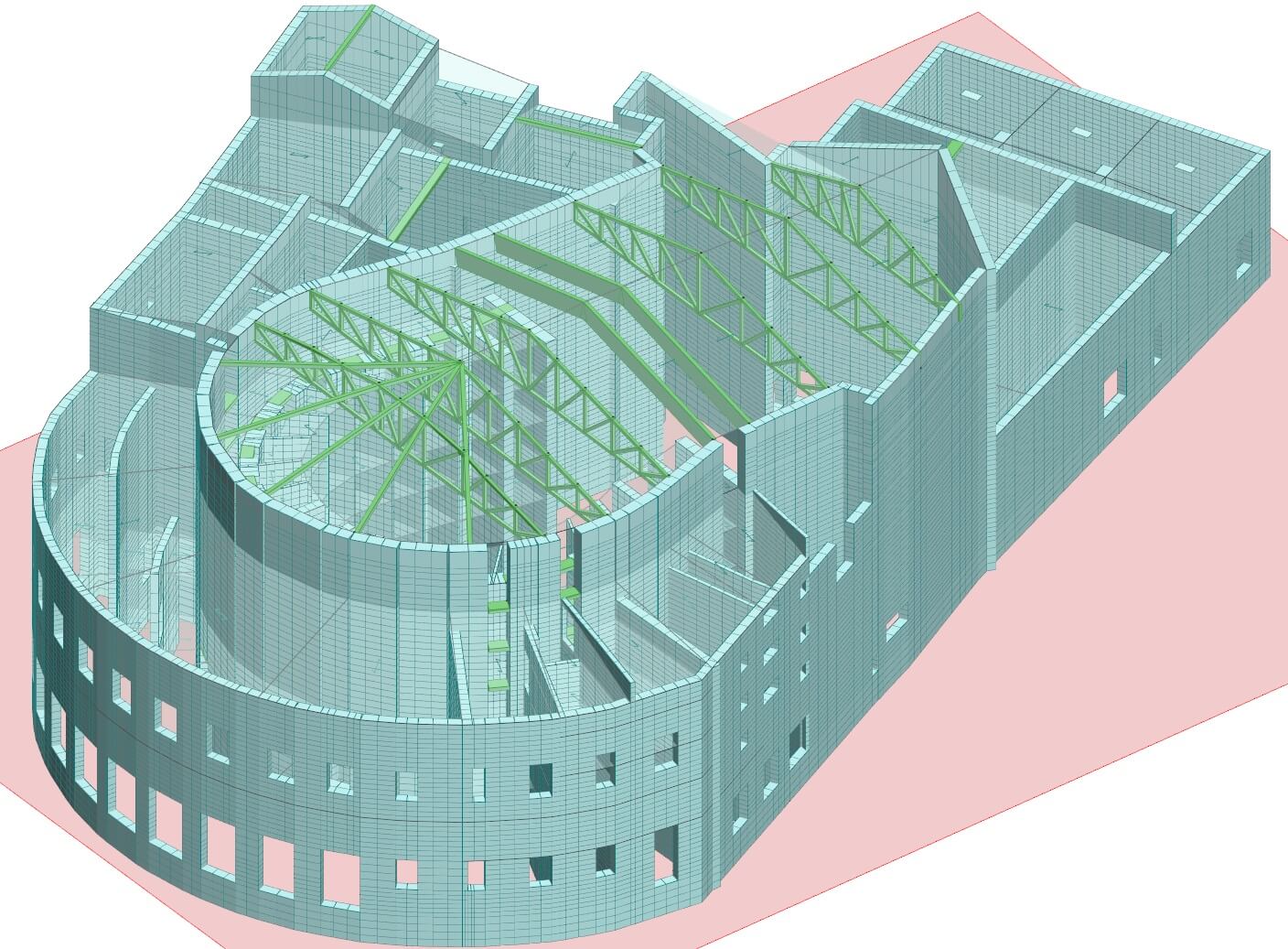
Seismic Vulnerability Analysis of Metastasio Theater
The theater was built at the request of the city's new bourgeois and popular classes, based on a design by Luigi de Cambray Digny, director of the Grand Duchy's Royal Factories, starting in 1826 and was inaugurated in 1830.
The building is protected under Title I of Legislative Decree 42/2004 and consists of different construction types, the result of successive historical stratifications.
Since its construction, several restoration phases have taken place between the 19th and 20th centuries; a few years after its completion, the theater already required new work: between 1850 and 1852, theater seasons were suspended to refurbish the stage sets, restore the audience floor, and replace some ceiling beams.
Subsequent interventions between 1867 and 1869 included reshaping the auditorium curve, restructuring the artist dressing rooms, and creating a new entrance. In 1871, the under-stage area was renovated to create two rooms for the orchestra. In 1922, the gallery was expanded above the fourth tier of boxes. After World War II, although the structure suffered no major damage, a series of interventions were carried out to mitigate the deterioration. Finally, in the 1980s, new work was done to comply with safety regulations and some restoration interventions were made, bringing the theater to its current state.
The assignment concerns determining the building’s seismic vulnerability—by reconstructing its structural model, including surveys to be agreed upon with the Superintendence, as the building is protected—in order to assess the risk of damage or modifications in the event of an earthquake.
